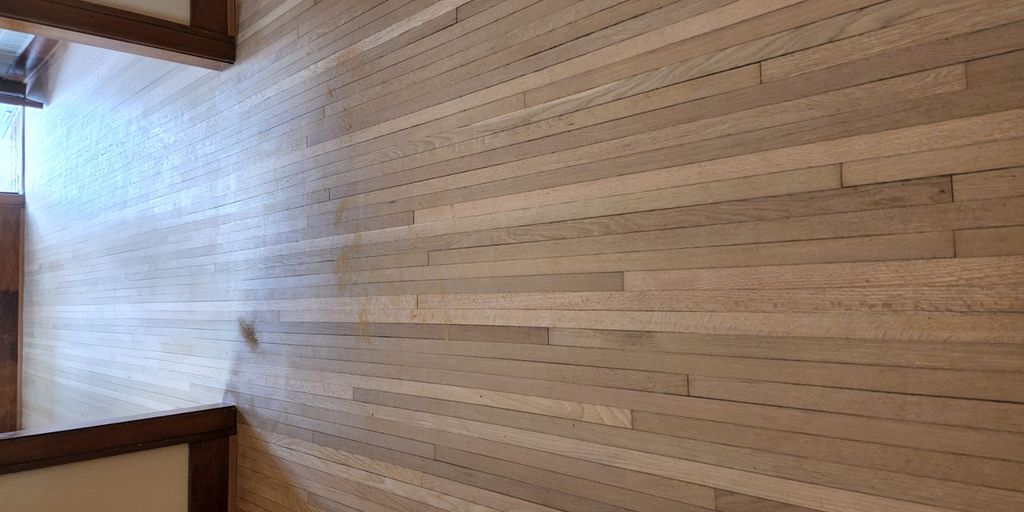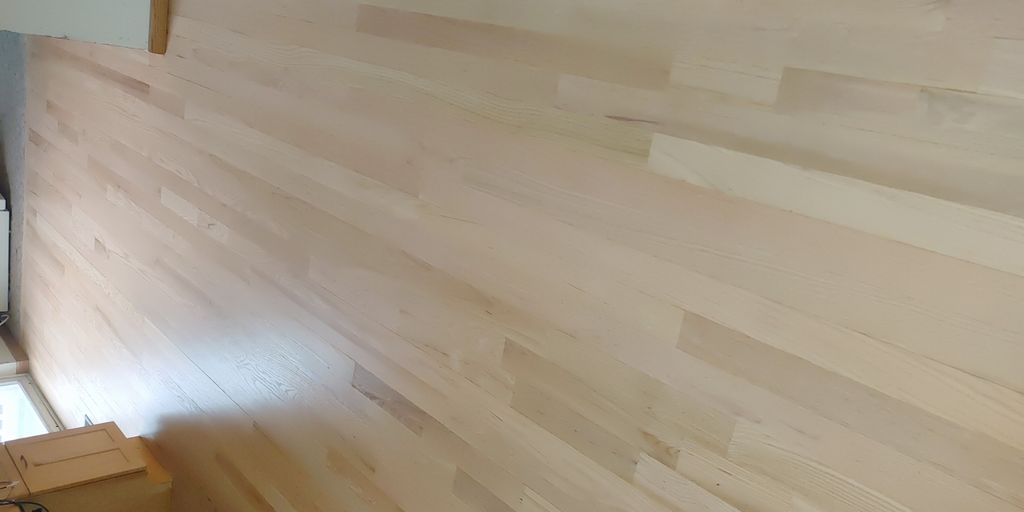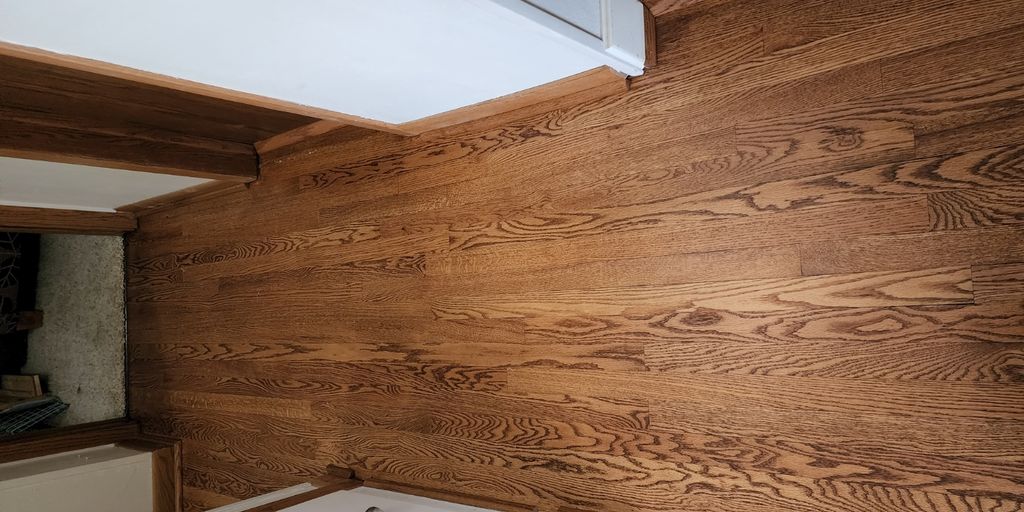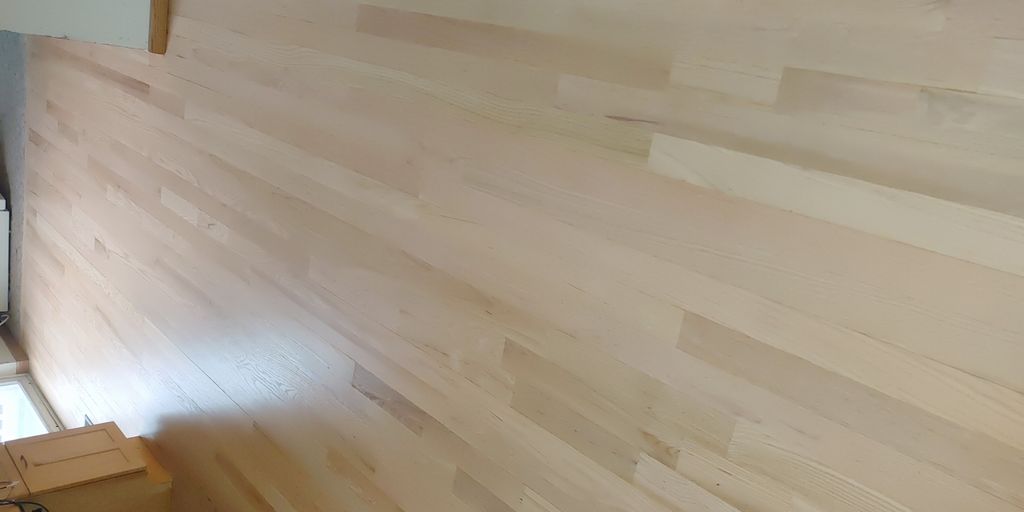Choosing the right flooring can make a big difference in your home. This guide will help you understand the best flooring options, factors to consider, and how to find the best floor installation near you. With so many choices available, it’s important to know what fits your needs and budget.
Thank you for reading this post, don't forget to subscribe!Key Takeaways
- Explore various flooring types like hardwood, vinyl, and carpet for your home.
- Consider durability, style, and cost when selecting flooring.
- Hiring professionals for installation ensures quality and saves time.
- Research local installers and read reviews to find the best services.
- Affordable flooring options can enhance your home without breaking the bank.
Understanding Different Types of Flooring

When it comes to flooring, homeowners have a variety of options to choose from. Each type of flooring has its unique features, benefits, and ideal uses. Here’s a closer look at some popular flooring types:
Hardwood Flooring Options
Hardwood flooring is a classic choice that adds warmth and elegance to any home. It comes in various species, such as oak, maple, and cherry, each offering distinct grain patterns and colors. Solid hardwood can be sanded and refinished multiple times, making it a long-lasting investment. However, it is sensitive to moisture and may not be suitable for basements or bathrooms.
Benefits of Vinyl Flooring
Vinyl flooring has gained popularity due to its versatility and affordability. Here are some key benefits:
- Water-resistant: Ideal for kitchens and bathrooms.
- Variety of styles: Mimics the look of wood or stone.
- Easy maintenance: Simple to clean and maintain.
Choosing Carpet for Your Home
Carpet provides comfort and warmth, making it a great choice for bedrooms and living areas. Here are some considerations:
- Texture and color: Available in various styles to match your decor.
- Insulation: Offers sound absorption and warmth underfoot.
- Maintenance: Requires regular cleaning to keep it looking fresh.
In summary, understanding the different types of flooring can help you make an informed decision that suits your home’s needs and style. Whether you prefer the elegance of hardwood, the practicality of vinyl, or the comfort of carpet, there’s a perfect flooring option for every homeowner.
Factors to Consider When Choosing Flooring
When selecting flooring for your home, several key factors can influence your decision. Prioritizing the right elements can lead to a satisfying choice that meets your needs.
Durability and Maintenance
- Durability: Consider how much foot traffic the area will see. High-traffic areas need tougher materials.
- Maintenance: Some flooring types require more upkeep than others. For example, hardwood may need refinishing, while vinyl is easier to clean.
- Comfort: Think about how the flooring feels underfoot, especially in areas like bedrooms and living rooms.
Aesthetic Appeal and Style
- Design: Choose a style that complements your home’s decor. Options range from modern to traditional.
- Color: Lighter colors can make a space feel larger, while darker shades add warmth.
- Texture: Different textures can enhance the visual interest of your flooring.
Cost and Budget Considerations
| Flooring Type | Price Range (per sq ft) | Lifespan |
|---|---|---|
| Laminate | $1 – $5 | 10-20 years |
| Vinyl | $2 – $7 | 10-25 years |
| Hardwood | $5 – $15 | 20-100 years |
| Carpet | $1 – $10 | 5-15 years |
In summary, understanding these factors can help you make an informed decision that balances quality and affordability.
The Importance of Professional Installation

When it comes to flooring, professional installation is key to achieving the best results. Here’s why hiring experts can make a significant difference:
Benefits of Hiring Experts
- Expertise: Professionals have the skills and experience to handle various flooring types, ensuring a flawless installation.
- Time-saving: With the right tools and knowledge, they can complete the job efficiently, allowing you to enjoy your new floors sooner.
- Quality Assurance: Professionals ensure that every detail is perfect, reducing the risk of issues like gaps or uneven surfaces.
Avoiding Common DIY Mistakes
- Incorrect Measurements: Miscalculating the area can lead to wasted materials and extra costs.
- Improper Installation: Without the right techniques, floors may not last as long or look as good.
- Lack of Tools: Professionals have specialized tools that make the job easier and more precise.
Ensuring Long-lasting Results
- Durability: Proper installation by experts can enhance the longevity of your floors, making them a worthwhile investment.
- Warranty: Many professional services offer warranties, giving you peace of mind that your investment is protected.
- Aesthetic Appeal: A well-installed floor not only looks great but also adds value to your home.
Investing in professional installation is not just about the immediate results; it’s about ensuring your floors stand the test of time and enhance your home’s beauty.
By choosing to hire professionals, you can avoid the pitfalls of DIY projects and enjoy beautiful, durable flooring that meets your expectations.
Finding the Best Floor Installation Near Me
When it comes to installing new flooring, finding the right professionals is crucial. Quality installation can make all the difference in the longevity and appearance of your floors. Here are some key steps to help you find the best floor installation services near you:
Researching Local Installers
- Start by searching online for local flooring installers. Look for companies with good reputations and experience in the type of flooring you want.
- Check their websites for information on services offered, and see if they provide free estimates.
- Consider asking friends or family for recommendations based on their experiences.
Reading Reviews and Testimonials
- Look for customer reviews on platforms like Google or Yelp. Positive feedback can indicate a reliable installer.
- Pay attention to testimonials that mention professionalism and quality of work.
- Don’t hesitate to reach out to previous customers for their insights on the installation process.
Comparing Quotes and Services
- Once you have a list of potential installers, request quotes from each. This will help you understand the average costs in your area.
- Compare not just the prices, but also the services included. Some companies may offer additional benefits like a one-year labor warranty or financing options.
- Make sure to clarify what is included in the quote, such as materials, labor, and any extra fees.
Finding the right flooring installer is essential for ensuring a successful project. Take your time to research and compare options to make an informed decision.
Cost-effective Flooring Solutions
When it comes to flooring, finding a balance between quality and affordability is key. Here are some effective strategies to help you make the best choice for your home.
Balancing Quality and Price
Investing in quality materials can save you money in the long run. While cheaper options may seem appealing, they often require more frequent replacements. Consider these points:
- Look for durable materials that withstand wear and tear.
- Research local flooring professionals who can guide you in selecting the right materials.
- Compare prices across different suppliers to find the best deals.
Exploring Affordable Materials
There are several [[budget-friendly flooring options](https://www.eufy.com/blogs/robovac/cheapest-flooring-option)](https://lifehacker.com/home/cheapest-flooring-options-you-can-install-yourself) available:
- Vinyl Flooring: Ranges from $3 to $7 per square foot, offering durability and easy maintenance.
- Laminate Flooring: Costs about $3 to $10 per square foot, mimicking the look of hardwood without the hefty price tag.
- Carpet: A cozy option averaging $3.50 to $11 per square foot, perfect for bedrooms and living areas.
| Flooring Type | Average Cost (per sq ft) | Durability |
|---|---|---|
| Vinyl | $3 – $7 | Moderate |
| Laminate | $3 – $10 | High |
| Carpet | $3.50 – $11 | Moderate |
DIY vs. Professional Installation
Deciding between DIY and hiring a professional can impact your budget:
- DIY: Can save on labor costs, but requires time and skill.
- Professional Installation: Ensures quality and longevity, especially for complex flooring types. Hiring local hardwood flooring services can provide peace of mind.
Remember, investing in quality flooring and professional installation can enhance your home’s value and save you money over time.
By considering these factors, you can find cost-effective flooring solutions that meet your needs without compromising on quality.
Enhancing Home Value with New Flooring

Upgrading your flooring can significantly boost your home’s value and appeal. New flooring not only enhances aesthetics but also improves functionality. Here are some key points to consider:
Impact on Property Value
- Installing hardwood flooring is one of the best investments you can make. It can increase your home’s resale value significantly.
- Other materials like tile and luxury vinyl plank (LVP) also add value, but hardwood often provides the highest return on investment (ROI).
- Regular maintenance, including floor refinishing services, can keep your floors looking new and extend their lifespan.
Choosing Timeless Designs
- Opt for classic styles that appeal to a wide range of buyers. Popular choices include:
- Oak and maple hardwood
- Neutral-colored tiles
- Durable and stylish vinyl options
- Avoid overly trendy designs that may not stand the test of time.
Maximizing Return on Investment
- To maximize your investment, consider these tips:
- Invest in high-quality materials that are durable and easy to maintain.
- Hire professionals for installation to ensure a flawless finish.
- Keep your flooring in good condition with regular cleaning and maintenance.
Upgrading your flooring is a smart way to enhance your home’s value and create a welcoming atmosphere for potential buyers.
By making informed choices about your flooring, you can create a beautiful space that not only meets your needs but also appeals to future buyers.
Sustainable and Eco-friendly Flooring Options
When it comes to flooring, choosing sustainable options is not just good for the planet; it can also enhance your home’s beauty. Here are some popular eco-friendly flooring choices:
Bamboo Flooring
Bamboo is a fantastic choice for those looking for sustainability. It grows quickly and can be harvested without harming the plant. Bamboo flooring is naturally pest-resistant and requires minimal maintenance, making it a practical option for homeowners. Prices typically range from $5 to $15 per square foot.
Cork Flooring
Cork is another excellent eco-friendly option. It is harvested from the bark of cork oak trees, which regrow after harvesting. This makes cork a renewable resource. Cork flooring is also antimicrobial and hypoallergenic, making it a great choice for families. Expect to pay around $5 to $12 per square foot for cork flooring.
Recycled and Reclaimed Materials
Using recycled or reclaimed materials is a smart way to reduce waste. These materials can include wood from old buildings or furniture, which can be transformed into beautiful flooring. This not only helps the environment but also adds a unique character to your home.
Low-impact Installation Practices
When installing flooring, consider using low-VOC (volatile organic compounds) products. These products are better for indoor air quality and are safer for your family. Choosing eco-friendly installation methods can further enhance the sustainability of your flooring project.
Opting for sustainable flooring options not only benefits the environment but also adds value to your home.
Summary of Eco-friendly Flooring Options
| Type | Benefits | Cost per Square Foot |
|---|---|---|
| Bamboo | Fast-growing, pest-resistant | $5 – $15 |
| Cork | Renewable, antimicrobial | $5 – $12 |
| Recycled Wood | Unique character, reduces waste | Varies |
| Low-VOC | Better air quality, safer for families | Varies |
Maintenance Tips for Long-lasting Floors
Regular Cleaning and Care
To keep your floors looking their best, daily cleaning is essential. Use a dry mop, broom, or vacuum cleaner to remove dust and dirt, which can act like sandpaper and damage the surface. Additionally, damp mopping can help maintain shine without causing harm.
Handling Repairs and Refinishing
Address any scratches or damages promptly. For hardwood floors, knowing when to refinish is crucial. Regular maintenance can extend the life of your floors significantly. Consider using rugs in high-traffic areas to protect against wear and tear.
Protective Measures for High Traffic Areas
Implementing protective measures can greatly enhance the durability of your flooring. Here are some tips:
- Use doormats at entrances to trap dirt and moisture.
- Place area rugs in busy areas to reduce wear.
- Avoid wearing shoes indoors to minimize scratches.
Remember, taking care of your floors not only keeps them looking great but also saves you money in the long run by preventing costly repairs.
By following these essential flooring maintenance tips, you can ensure your floors remain beautiful and functional for years to come.
Trends in Modern Flooring Design
Popular Styles and Patterns
In recent years, homeowners have embraced biophilic design, which connects indoor spaces with nature. This trend emphasizes natural materials and earthy tones, creating a calming atmosphere. Lighter colors and longer boards are also in vogue, giving rooms a more spacious feel.
Innovative Materials and Technologies
The flooring industry is seeing a rise in innovative materials like bamboo and cork, which are not only stylish but also eco-friendly. These materials offer durability and sustainability, appealing to environmentally conscious homeowners. Additionally, advancements in technology have led to products like Invisicoat®, which enhances durability and ease of maintenance.
Incorporating Flooring into Interior Design
Flooring is no longer just a functional element; it plays a crucial role in overall interior design. Homeowners are now considering how their flooring choices can complement their decor. For instance, rich, darker woods are making a comeback, adding warmth and elegance to spaces.
Remember, the right flooring can transform your home, enhancing both its beauty and functionality.
Summary of Key Trends
- Natural materials: Bamboo, cork, and reclaimed wood.
- Earth tones: Warm colors that create a cozy atmosphere.
- Innovative technologies: Products that enhance durability and ease of use.
By staying updated on these trends, homeowners can make informed decisions that elevate their living spaces.
Understanding Flooring Installation Costs
When planning a flooring project, understanding the costs involved is crucial. The national average for flooring installation is around $7 per square foot, which translates to approximately $3,500 for a 500-square-foot room. However, prices can vary significantly based on several factors.
Breaking Down Material Expenses
- Material Type: Different flooring materials come with different price tags. For example:
- Laminate: $0.68 – $2.59 per sq ft
- Real Hardwood: $3 – $12 per sq ft
- Tile: $1 – $3 per sq ft
- Carpet: $2 – $5 per sq ft
Labor and Additional Fees
- Labor Costs: Professional installation rates typically range from $0.60 to $4 per square foot. This does not include materials or any extra work needed, such as removing old flooring.
- Additional Costs: Don’t forget to factor in underlayment, which is essential for many flooring types, and can add $25 for 500 sq ft on average.
Budgeting for Your Project
- Size of the Area: The larger the area, the higher the cost. For instance, installing 2,000 sq ft of hardwood will be much more expensive than 200 sq ft of tile.
- Function of the Area: Consider the room’s purpose. High-traffic areas may require more durable materials, impacting your budget.
Understanding these costs helps you make informed decisions and find the best flooring that fits your financial plan.
By being aware of these factors, you can better navigate the costs associated with flooring installation and ensure a successful project that meets your needs.
When it comes to flooring installation costs, understanding what influences the price can help you make better choices. Factors like the type of flooring, the size of the area, and the complexity of the installation all play a role. If you’re ready to explore your options and get a quote, visit our website today!
Final Thoughts on Finding Quality Floor Installation
In conclusion, choosing the right flooring and installation service can greatly enhance your home. By taking the time to research local options, you can find a balance between quality and affordability. Remember to consider your specific needs, whether it’s durability, style, or maintenance. Don’t hesitate to reach out to professionals who can guide you through the process and ensure a smooth installation. With the right approach, you can transform your living space into a beautiful and functional area that you’ll enjoy for years to come.
Frequently Asked Questions
What types of flooring are available?
There are many flooring choices, including hardwood, vinyl, carpet, and tile. Each type has its own pros and cons.
Should I install my flooring myself or hire a professional?
If you’re handy and experienced, you might do it yourself. But hiring a professional can save time and ensure a better finish.
How do I find a good flooring installer near me?
You can look online for local installers, read reviews, and ask for quotes to find the best option.
What factors affect flooring costs?
Costs can vary based on the type of flooring, the size of the area, and whether you hire professionals or do it yourself.
How long does flooring installation take?
The time it takes depends on the type of flooring and the size of the area, but it usually takes a few days.
What maintenance do different flooring types need?
Hardwood may need refinishing, while vinyl and tile need regular cleaning. Carpets require vacuuming and occasional deep cleaning.
Can new flooring increase my home’s value?
Yes, new flooring can enhance your home’s appeal and may increase its market value.
What are eco-friendly flooring options?
Bamboo, cork, and recycled materials are great eco-friendly choices for flooring.



